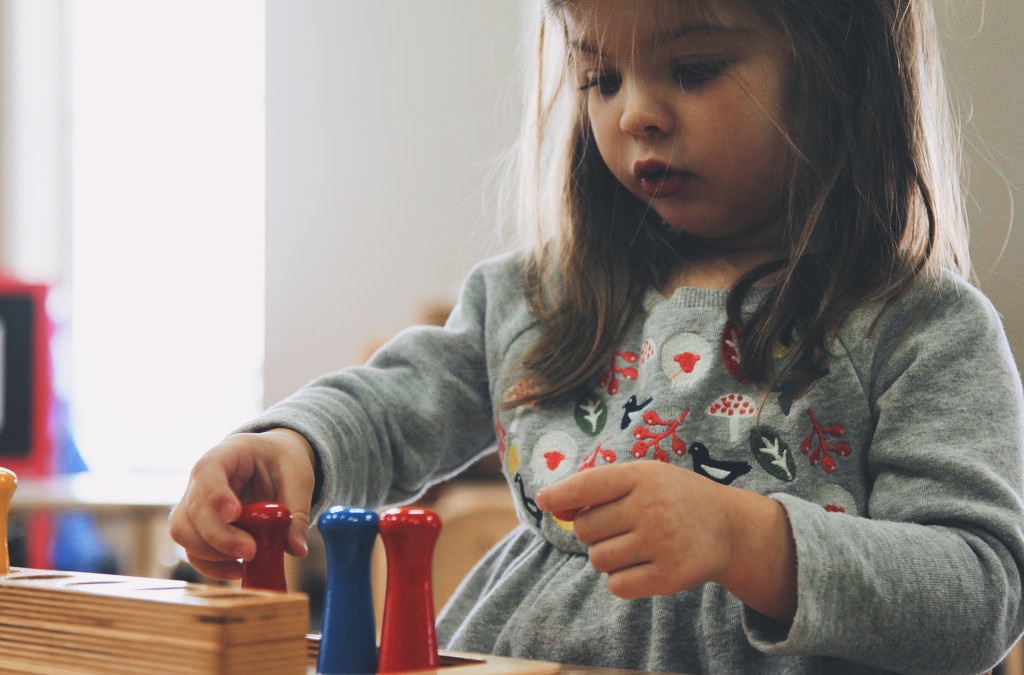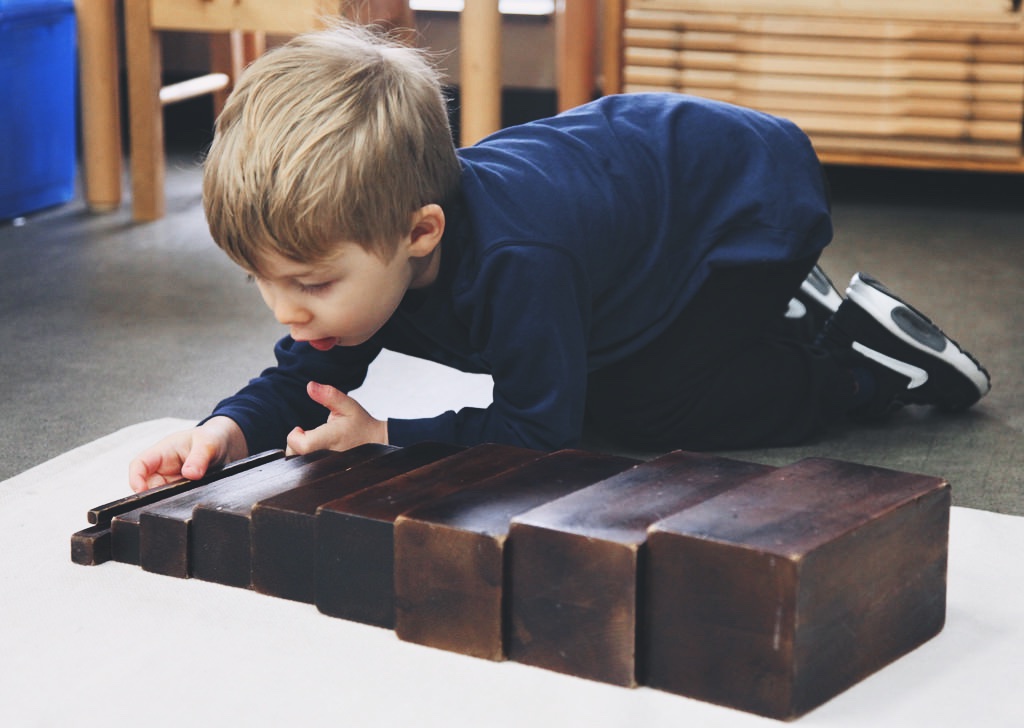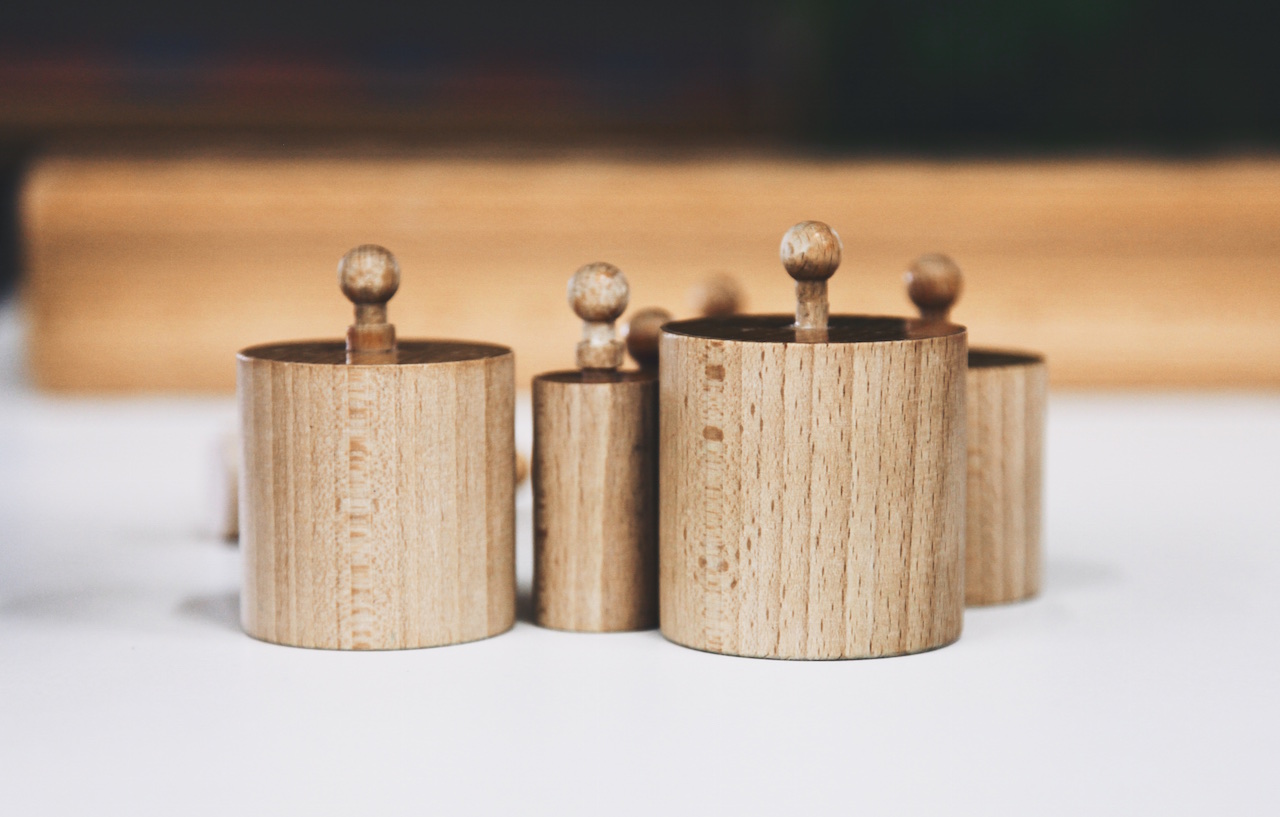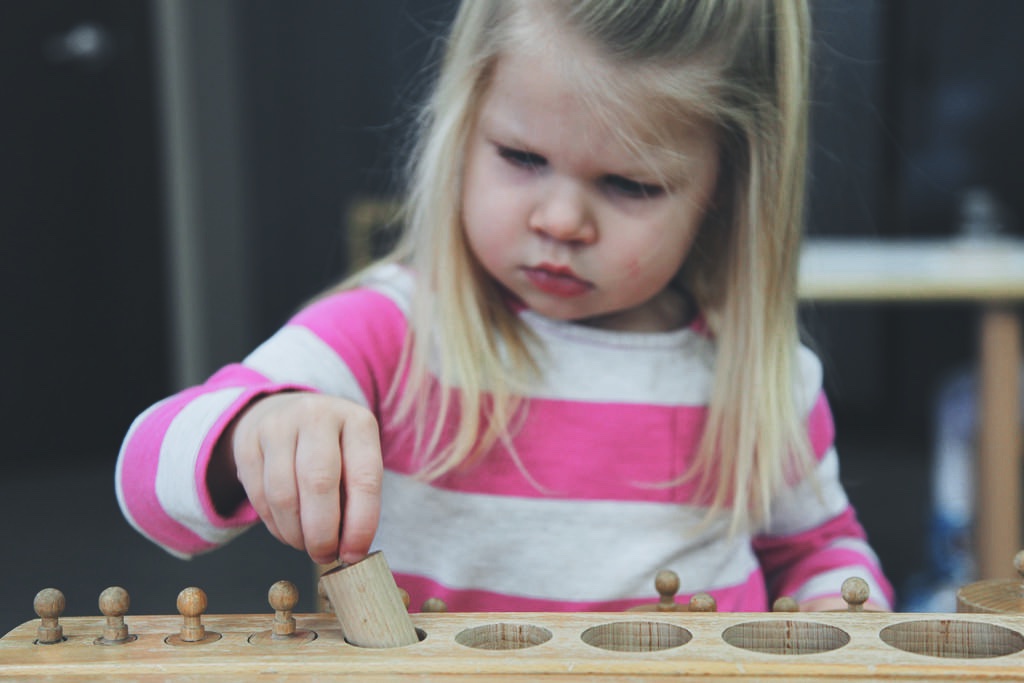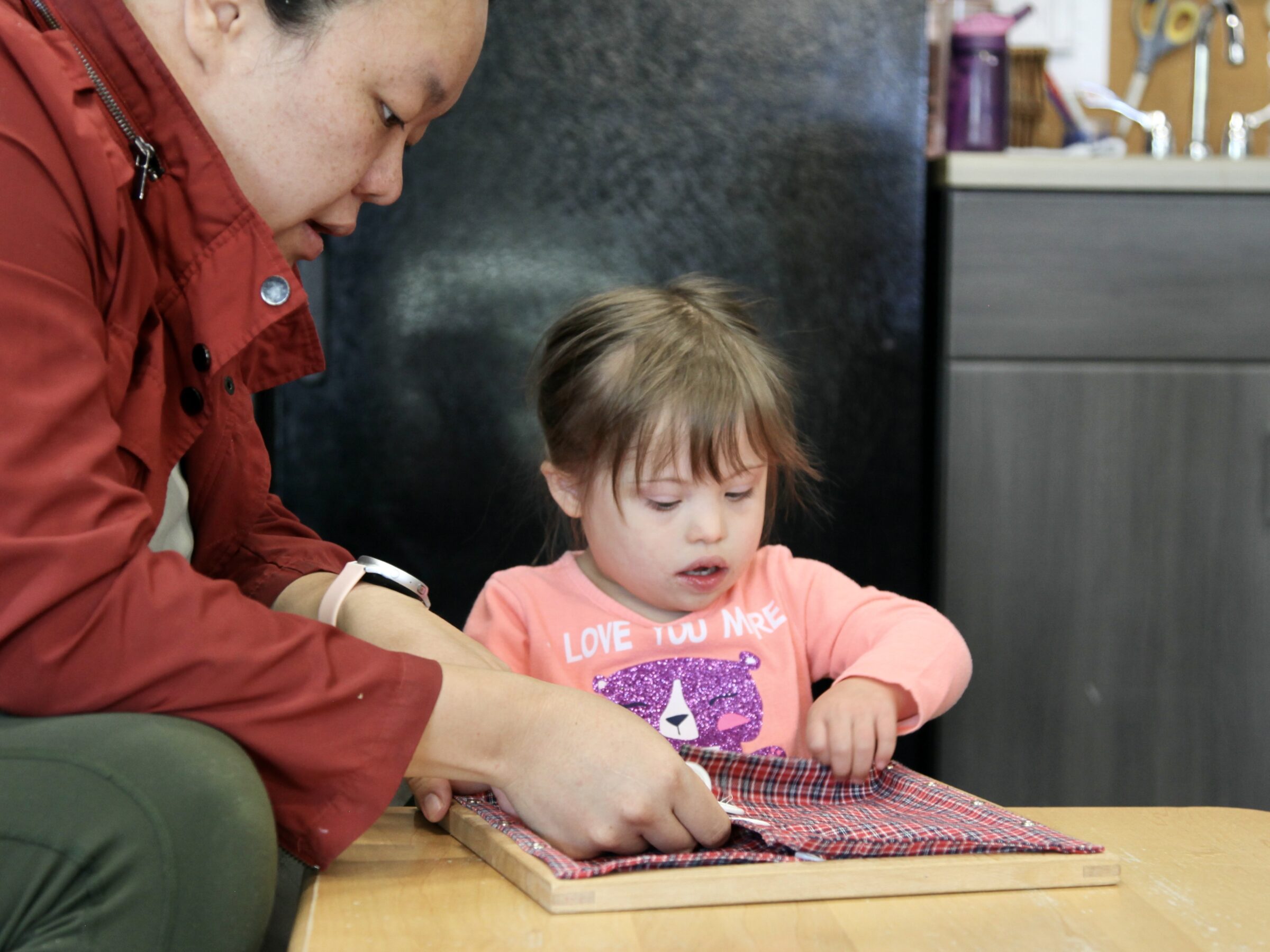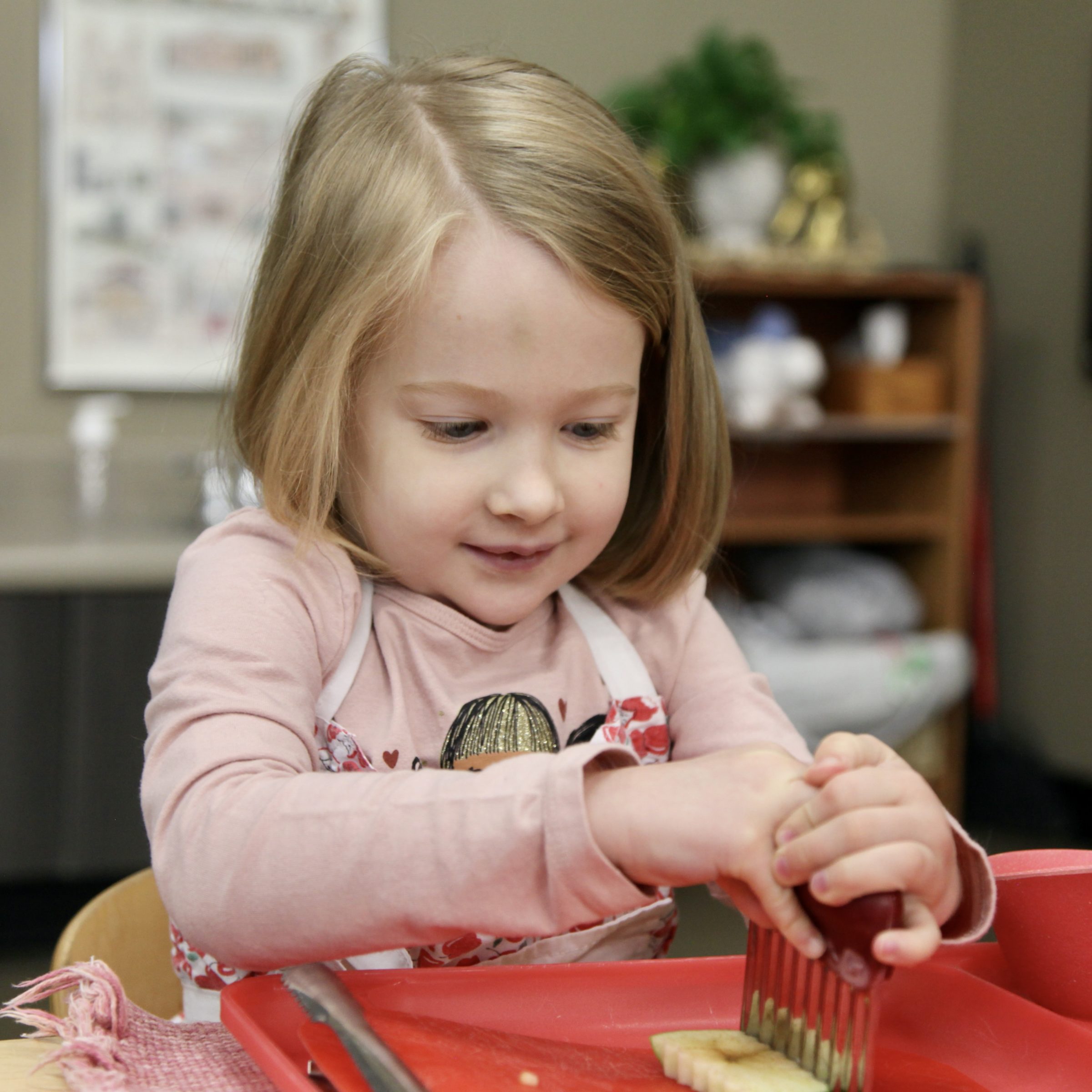The Montessori Materials
Thoughts & Reflections
The Montessori Materials are beautiful.
Visitors are often surprised by the nature of the materials. They are primarily made of natural elements: wood, metal, glass, porcelain, paper. They are breakable, sometimes fragile. This is for many reasons.
It’s one of the ways we show children we respect and trust them. We know even very little children can carry and use these delicate materials with care. Children carry themselves with a higher level of dignity when they’re carrying a tray with small glass vases balanced precariously on it. Running turns to careful walking. Heads held high.
Children are smart. They’re constantly testing and experimenting with objects and laws they encounter in their world; a baby drops a spoon from the table a hundred time to prove to himself the law of gravity is infallible. Plastic and ceramic give different responses to the hand. A child might throw a sippy cup out of frustration, or even out of excitement or for fun, but she doesn’t throw the glass cup she is given in the Montessori classroom. No one needs to tell her that action wouldn’t end well.
Since the children handle these materials with care, they last a very long time. Many of the materials have been on the shelves at Baan Dek since our opening almost 10 years ago. There are signs of love and of use, but not of damage. Children returning to Baan Dek to visit, even after years, quickly go to a former favorite material and touch it with care and respect.
The materials were scientifically designed through observation and experimentation. Anecdotally, the reason it is the Pink Tower is because Maria Montessori tested Towers of ten cubes incrementally growing in size from 1cm cubed to 10cm cubed in different colors, and Pink was the color children chose most frequently, used purposefully, mastered and experimented with.
The Math and Language materials were designed by bringing large, abstract concepts down to their most basic essence — The Decimal System, Verbs, Fractions. How can these concepts be made visible, tangible, accessible to a young child with an eager, absorbent mind?
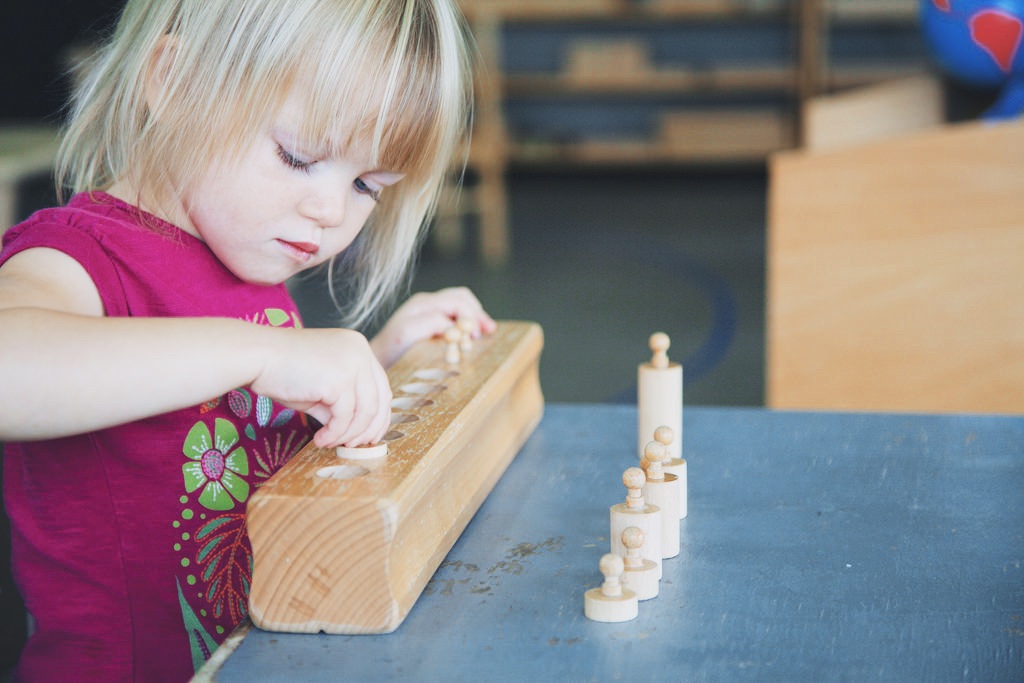
Materials stand alone in their intention — the Large Button Frame is something a child can work with at a table, developing concentration, focus, manual dexterity — but also contain Indirect Preparations — getting a skill or a concept ready for something else. If you master the Large Button Frame, buttoning becomes a transferrable skill.
A less obvious facet of the Montessori materials is their self-teaching and self-correcting nature. The materials almost reach out and call for you to touch them, to use them in the way they were intended, to teach the skill or concept with little explanation.
Let’s look at the Cylinder Blocks. They highlight these concepts beautifully.
The Cylinder Blocks are one of the first materials a child might be presented with in the Sensorial Area, where the materials help children create order of all the stimuli perceived through their senses.
There are ten cylinders with a knob to grasp contained within a rectangular block. No one ever said Montessori materials were creatively named. The quality being highlighted is size. There are four cylinder blocks. When adults are near them, it is common for them to reach out and grasp the knob and lift the cylinder out of the block. This is exactly how the material is intended to be used! This is how the materials are self-teaching. The way the material is designed shows the user what to do with it.
The Cylinder Blocks also highlight the self-correcting nature of the materials.
The ten cylinders are removed from the block. As the child returns the cylinders to the block, they will naturally notice if a piece fits perfectly, if there is a bit of wiggle room, if a cylinder sticks up higher or sits down lower in block than it should.
The child might notice this right away, or they might notice when they have one piece left, and there isn’t a hole for the cylinder to fit in. Even the first time a child takes out a Cylinder Block, no one needs to tell a child if they completed it correctly or not. They don’t need to check in with an adult to tell them if they did it.
The child might not be able to fix their mistake, or even identify what the exact mistake was, but they will be able to tell there is some error.
Fortunately, they have many friends who are all eager to help.
Because the child is the one both identifying and fixing their error, they gain confidence in themself, in their perception. Mistakes are normal and commonplace, and we have the ability to find or create solutions.
“Who could have guessed all that the child gains, that we can’t yet see?”
The child learns to rely primarily on himself. Problem-solving becomes a transferrable skill; not just for the Montessori classroom, not just for academics, but for everyday situations, for relationships, for life.
The child learns that if she cannot come up with a solution, if he determines outside help is required, help is available. She can both ask for and offer help. You matter. You are never too small to assist, you are never too old to grace a friend with help.
In the Montessori Materials, we see an interesting puzzle to complete. Perhaps it calls out to us to use it as intended, to return it to it’s place ready for the next person to use. Perhaps we see a material that would have helped us to learn an abstract concept, such as long division, more easily. Perhaps a materials simply looks like a lot of fun.
Who could have guessed all that the child gains, that we can’t yet see?
Written by:
Charlotte Snyder

